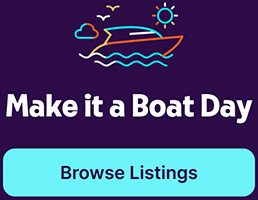Anchoring a fishing boat is a crucial skill that every angler should master. However, it's not as simple as throwing the anchor overboard. The position from which you anchor your boat can significantly impact its stability and safety. One common mistake that many beginners make is anchoring the boat from the stern, which can lead to some serious dangers. In this comprehensive guide, we will delve into the major risks associated with stern anchoring and how to avoid them.
The Dangers of Stern Anchoring
Risk of Swamping
One of the most significant dangers of anchoring a fishing boat from the stern is the risk of swamping. Swamping refers to the situation where water floods into the boat, which can cause it to sink. When you anchor from the stern, your boat is positioned in a way that its bow is not facing the incoming waves. As a result, waves can easily crash into the stern and flood the boat.
Unlike the bow, the stern of a boat is not designed to handle the force of incoming waves. It's lower and often open, making it easier for water to get in. Once the water starts to fill the boat, it can be challenging to remove it, especially in rough sea conditions. This can lead to a dangerous situation where the boat becomes unstable and may eventually sink.
Loss of Control
Another major danger of stern anchoring is the loss of control over the boat's direction. When you anchor from the bow, the boat can swing around the anchor, allowing it to face into the wind or current. This position gives you better control over the boat's direction and makes it easier to handle.
On the other hand, when you anchor from the stern, the boat is likely to swing broadside to the wind or current. This position can make the boat unstable and difficult to control, especially in strong wind or current conditions. It can also increase the risk of the boat being hit by waves from the side, which can further destabilize it.
How to Anchor a Fishing Boat Safely
Choose the Right Spot
Choosing the right spot to anchor your boat is crucial for ensuring its stability and safety. Ideally, you should look for a spot that provides shelter from the wind and waves. It should also have a good holding ground for the anchor, such as sand or mud.
It's important to avoid areas with strong currents or heavy boat traffic. These conditions can make it difficult to maintain the boat's position and increase the risk of collision. Also, be aware of the tide changes, as they can affect the water depth and the boat's position.
Anchor from the Bow
As we've discussed earlier, anchoring from the bow is the safest way to anchor a fishing boat. The bow is designed to handle the force of incoming waves, making it less likely for the boat to get swamped.
To anchor from the bow, you should first approach the spot slowly and head into the wind or current. Once you've reached the spot, lower the anchor slowly to avoid tangling the rope. Then, let out enough rope for the anchor to reach the bottom and hold securely. Finally, secure the rope to the bow and adjust the boat's position as needed.
Additional Safety Tips
Use the Right Anchor
Using the right anchor is essential for ensuring the boat's stability. The type of anchor you need depends on the sea bottom and the size of your boat. For example, fluke anchors work well on sandy or muddy bottoms, while plow anchors are suitable for rocky or grassy bottoms.
As for the size, the anchor should be heavy enough to hold the boat securely. A general rule of thumb is to use an anchor that weighs at least 1 pound for every foot of boat length. However, you may need a heavier anchor in rough sea conditions.
Check the Weather
Before you head out for fishing, always check the weather forecast. Avoid going out in rough weather conditions, as they can make anchoring more challenging and increase the risk of swamping. If you're already out and the weather starts to turn bad, it's best to pull up the anchor and head back to shore.
Remember, safety should always be your top priority when you're out on the water. By understanding the dangers of stern anchoring and following the right anchoring techniques, you can ensure a safe and enjoyable fishing trip.
Turn Your Fishing Passion into Profit with Getmyboat
Now that you're equipped with the knowledge to anchor safely, why not turn your expertise into a thriving business? With Getmyboat, you can list your fishing boat for free and tap into a global audience eager to book their next aquatic adventure. Our comprehensive suite of boat management tools simplifies attracting new customers, scheduling trips, and processing payments, so you can focus on what you love—fishing. Ready to expand your reach and become a Superowner? List your boat today and cast a wider net for success!






